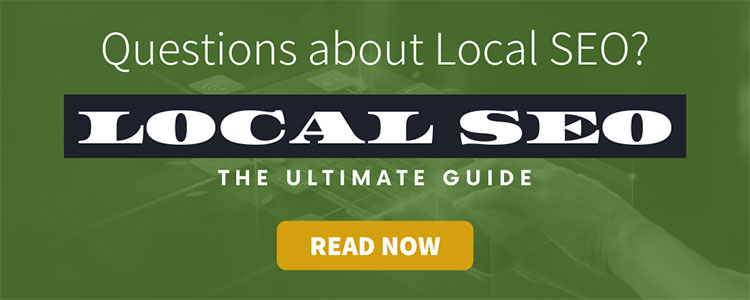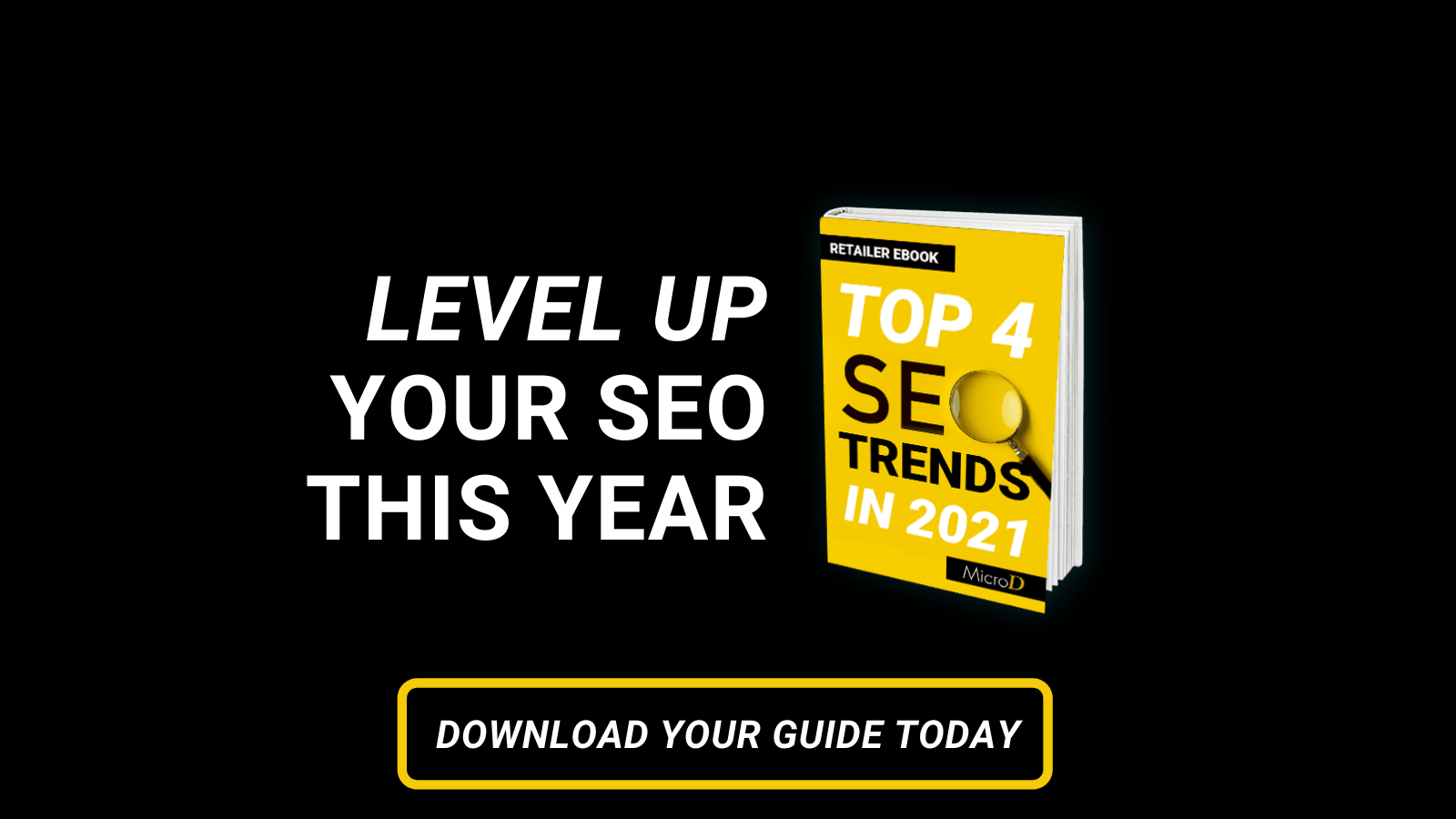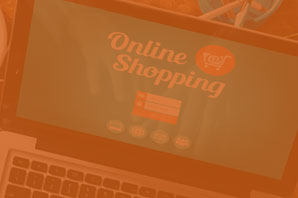Search engine optimization best practices change from year to year. While many of the core functions will always be relevant, the trends shift. Trends in SEO shift based on Google’s algorithm and consumer behavior. Because so much changed in 2020, it’s time to catch up on the SEO best practice that impacts retail. These strategies are all critical and no one topic is more valued than another. But based on your retail strategy, you may find a better place to start building your SEO strategy for 2021.
How SEO Trends Impact Retail Ecommerce Websites
This article will focus on 4 of the most important SEO trends for retail 2021. Retailers should apply these topics to a 2021 SEO marketing strategy to achieve better online visibility for shoppers. The addition of eCommerce to your business strategy doesn’t change these SEO best practices. In fact, if an eCommerce retailer isn’t doing all of these SEO strategies in 2021 as a foundation, they will see more competitors locally and nationally takeover their spot in the rankings.
>> Need help understanding where to optimize your digital marketing budget? Talk with a digital expert at MicroD.
Online shopping habits jumped 10 years ahead during 2020. This means that online visibility is more valuable than ever. It takes a lot of work to get a coveted place in the search engine results page (SERPs). And if you don’t have a strong SEO foundation for your eCommerce retail store, it will be harder to compete for consumers in 2021.
Let’s dive into the details of the first SEO best practice for a furniture retail store.
Write Long-form SEO Content for Retail Websites
Since 2010 marketing experts have said, “Content is King!” And they weren’t wrong. Content on a blog helps retailers share interesting content for their audience. But more importantly, content is a great tool for organic SEO strategy. Over the years, content marketing best practices have transformed. Short articles stuffed with keywords were all the rage. That is, until Google created a new algorithm to penalize the poor content written this way. As time passes and online users absorb more content, Google has changed the rules of the content strategy for SEO.
Why is Content-Length Important for SEO
During 2020 more people went online than ever before. Shoppers and browsers were tunneling through record numbers of website pages to absorb content. During all of this online browsing, Google continued to launch core updates to its search engine. Websites were penalized and fell in the search engine results because of poor content decisions (among other things). The websites that saw the best organic SEO boost created content for their visitors, not the search engines. Here’s what we mean by that.
People-first Content Strategy
People-first content strategies are focused first on the reader. Quality, language, engagement are all vital components of a people-first content strategy. This longer form of content keeps a reader engaged and helps your website’s performance.
Google values the type of content that keeps a reader engaged. So they want to reward more websites that create content that is designed for the reader’s intent.
Optimizing Long-Form Content
Now because this is an SEO article and not a whole content marketing segment, you need tips for optimizing long articles for SEO. These search engine best practice for articles can apply to long articles as well.
Target SEO Keywords
Your content needs a purpose. There are different camps on what comes first, the content or the keyword. It’s marketing’s version of the chicken and the egg. But no matter where you start, make the keyword a milestone in your process.
Identify a target keyword and semantic keywords to support it. Make sure that when you write the introduction, you’ve put the keyword in the top of the introduction to let Google know what this article is about. Don’t stuff the keyword into the first sentence if it doesn’t flow naturally. Remember that Google wants to find content that readers would gravitate to naturally.
Semantic Keywords

This is one of the big SEO trends for retail in 2021 that will improve your content and search results. Semantic keywords are phrases that relate to your target keyword. If you write about recipes, a target keyword for your article may be “how to make sourdough bread” and some semantic keywords might be “sourdough starter” “temperature for proofing bread” “best type of yeast”. These are supporting actors to your main talent. It gives search engines more context around what your article or page is about.
Using semantic phrases in your content and around your target keyword will give Google and the companies who want to link to your article, related content, or queries. The more information you can give Google about your content through these SEO best practices, the more likely you are to get listed higher in the search results than someone who skips the semantic keywords. Remember that Google wants to give readers the best version of what they’re looking for on the search results page. Every step you take in defining what your content is about and how much other people like it, the better you will perform.
Making Long Articles Easy to Read
Long content needs to feel like an easy read. You don’t want to get through the challenge of building the perfect 3000-word article, fully optimize, and distribute for huge traffic numbers only to get readers bouncing as soon as they see the mammoth on the page.
Trudging through 3000 words with no break feels like work. The harder the read, the likelier the bounce. And you want your readers to get hooked on your content from the beginning and breeze through it
naturally. There are great tips from writers and SEO experts on the best practice for breaking up long content. Here are some of the ways we recommend you approach this:
- Use Headings (H2s and H3s) to break up the sections
- Keep sections short. 300 words or fewer for every section.
- Add multimedia
- Use bullets to call out unique lists
If you can create scannable content that grabs the reader’s attention, you have a better chance of making that 3000-word article feel like 400 words.

Local SEO Trends for Retail in 2021
Local search continues to increase in value for retail in 2021. Almost 1/3 of daily searches on Google are local. Over the last several years, the statistics grow in favor of “going local” with your search strategy. The 2020 pandemic only increased the importance of local search because of its stay-at-home restrictions. While many shoppers went online to make buying decisions, many continued to refine their online search for a local solution or product.
Those retailers who were adopting a local-first SEO strategy found more success during the pandemic than others. And we think there’s a reason for that. According to Google, “The jagged impact of COVID-19 has highlighted the critical importance of being able to identify surges in local demand.”
Local search will be critical for many players in 2021. More specifically, retailers who are expecting to launch or improve an eCommerce store to their portfolio. This new extended aisle online showroom needs to target the local shoppers who need the product on that digital aisle. A few points we recommend you cover with your marketing plan are outlined in greater detail below.
Website Content
Retailers were forced to spend more time building up the retail website during the multi-state shutdowns across the country. If you didn’t focus on website content, here’s why you need to change your 2021 SEO strategy to include it.
Website content is more than just the products on your pages. It’s about every page on your website that a user could find in searching Google or browsing the internet. The more optimized your website can be for local shoppers, the better your chances are of appearing in those local search results. It’s more than just putting your city in the description of every product.
Local website content means tailoring your content to the local shoppers and what is important to the community around you. We wrote a lot about content and people-first intent. When you’re optimizing your content strategy for local shoppers, it means you’re writing about local events or features. Make sure to include website content about the location of your retail store. Write about the products that shoppers can find that match the things they’re interested in. Bring more of your local voice into the content through articles, location pages, about us features, and more. The more you write local content, the better your business looks to Google. Especially when you’re posting that local content on your Google My Business page.
Google My Business
Google My Business (GMB) has to be part of your local search strategy for 2021. SEO trends for retail are showing local profiles like GMB are going to be top drivers. Retailers with a brick and mortar showroom need to optimize for their local shoppers. That means not only claiming and updating your Google My Business profile. But using the many features of Google My Business to get more attention to your profile. Here are some of the key features you need to employ for a comprehensive Google My Business SEO strategy in 2021:
- Store hours especially around holidays or modified pandemic hours
- Updates/posts optimized with local keywords
- COVID-19 updates about your location(s) and expectations
- Category and description
- Review
- Photos
- FAQ
Why does your retail store need a Google My Business SEO strategy for 2021? Let’s take a look at what might bring shoppers to your GMB profile.
Getting In the Local Pack
It’s the place every business wants to appear. The Local Pack is a feature on the search engine results page (SERP) that showcases a map and select few businesses that are within that map related to the search query. For example: if a shopper types of furniture store Charlotte into the search bar of Google, one of the top sections will feature a map and 3 organic Google My Business pages.
This Local Pack has looked different over the years. From a 7-pack list of results to the exclusive 3 pack feature. And over time, the map pack has appeared in more search results. It appears in nearly 100% of searches, according to research by Search Engine Land. Nevertheless, this pack in any form is critical for SEO strategy for retailers in 2021. Shoppers prefer a local retailer to shop. When they search on mobile or desktop using Google, the top 3 businesses in this section receive nearly 50% of all clicks in local searches. And if these companies, like yours, will in 2021, have an updated Google My Business profile with lots of reviews, local products, local content, and store hours with products featured, the conversion to the customer goes up tremendously.
 Local Listings
Local Listings
One of the last local search strategies for every retailer in the local listing strategy. But many argue it’s one of the most important. Local listings are the collection of databases around the internet that collect your business’s information that customers need.
- Business Name
- Physical address
- Phone number
- Website URL
Search engines use different directories to inform users about your business. Unfortunately, it’s not as simple as just updating your Google My Business profile. But that’s certainly one area. Your business could have outdated location information on a directory like Yelp. This means part of the 92% of people on Yelp who are looking for local businesses won’t get the right information about your store.
Accurate local listings make or break companies. Because it’s not just the individual listings that can steer customers in the wrong direction. A comprehensive local listing improvement takes hundreds of directories together into consideration. The more aligned your data is across the internet, the better your ranking will be for local shoppers.
Each of these components of the local search strategy for 2021 is important because they work together. A well-designed SEO strategy for retail will include all parts because it benefits your business.
Mobile-friendliness
Mobile search remains a top device for search in 2020. Early this year, a study report 56% of searches were conducted using a mobile device. When we review the 2021 SEO trends for retail, Google says mobile-first indexing is going to be top of your list.
What is Mobile-First Indexing
According to Google, mobile-first indexing means “Google predominantly uses the mobile version of the content in your website for indexing and ranking your website.”
In March 2020, Google announced that it would switch to mobile-first indexing in September 2020. According to SEMRush, by March 2021 Google will have switched ALL websites from desktop-first to mobile-first indexing. It is years in the making and now a priority because of the online searches conducted on mobile devices. While many search results were already showing positive mobile-first indexing results, it became the main function.
For many website owners, this might not be a SERP death sentence because the website is responsive.
Why a Mobile-Friendly Website Matters in 2021
A responsive website means the same content is available on a mobile device as the desktop. But for the many retail websites that have essentially 2 versions of their website for different devices, this could be catastrophic. Google’s mobile-first indexing will only focus on the mobile version of your website. Let’s take a look at what that means for websites that are not responsive.
Many mobile-first websites trimmed down from the desktop version. Fewer images, less text but still a clean and easy to view experience for mobile users browsing around. But in this new update by Google, all of the great optimizations you’ve done on the desktop website will be useless in the search results. Because Google is only taking into consideration the text, images, and pages available on the mobile version of your website. For many websites, that could be a dramatic decrease in ranking opportunities.
If your website is not mobile-friendly in 2021, check with Google’s free tools to see what could be missing. You can also reach out to MicroD to assess your furniture retail website’s mobile-friendliness. This SEO trend for 2021 is more technical than most but a few of the features in our next trend will help you achieve better mobile-first indexing results.
UX trends in 2021
Each of these retail SEO trends for 2021 focus on getting visibility from online visitors. But what happens when they land on the website? Is the experience a positive one? In 2020, websites were major features for brick and mortar retailers. Because the retail showroom was closed, the online showroom was the only one left open. And while many successful retailers focused on improving the user experience (UX), there are many who missed out. Going into 2021, the SEO trend for retailers to get right is the user experience.
What is UX?
UX is the user experience. It’s the way we describe how the user, the people on your website, experience your website. Does the page load slowly? Is there too much text to read? Are there any menus to navigate the website? Can the person see the images on a mobile device? UX covers this and more. Google’s Webmaster Blog announced this year that ‘UX signals’ would be a critical component of its ranking factors in Core Web Vitals.
UX Improvements for 2021
While the user experience is important, there are other priorities in your business taking precedence. So where does a retailer start with this SEO trend? We’re going to focus on 3 areas of the user experience you can improve with your website partner.
 Google Core Web Vitals
Google Core Web Vitals
When it comes to user experience, page speed is key to this SEO trend. Think about the psychology of your shoppers. Patience for page loading is only decreasing each year. So the longer it takes for your page to load, the faster people will leave the page. And our research shows that when website visitors have a less-than-pleasing experience on the website, they are less likely to shop at that retail store in person. So, yes, page speed does matter to your whole business.
Google’s Core Web Vitals will look at different points of page speed performance. It’s not always about the entire page loading at once. Many retail websites have so many pages and product data on the page that it wouldn’t be feasible. Google breaks this out into different areas of both mobile and desktop results. Here’s some of what they’re looking at.
- Largest Contentful Paint (LCP) measures the time it takes for your page to load the main screen of information visible to the user in that window (also called viewport).
- First Input Delay (FID): How long it takes the page to start responding to user actions
- Cumulative Layout Shift (CLS): How much the page UI shift during page loading.
One of Google’s helpful tools to measure page speed at the basic level is its Pagespeed Insights tool. It’s important to work with your website developers to review your Google Search Console to identify these reports and what you can do to resolve some of the bigger red marks. Google Web Core Vitals will be important for your website in 2021 so make the trend part of your retail strategy today.
Key SEO trends for retail in 2021
We’ve covered a lot of ground in the SEO trends for retail in 2021. Best practices for these digital marketing tactics are always changing. This is why this is just the starting point for your retail website. Take a deep dive with your digital marketing expert to find which trends you’re already doing well and what areas you need to improve. If 2020 taught retailers anything, it was that agility and flexibility are important. Continue to monitor your data and analytics. Research the Google trends coming in 2021. Stay educated and informed. If you subscribe to our blog, we’ll keep bringing more of these SEO best practices to you. Our local digital marketing experts are available to help retailers with digital marketing.






